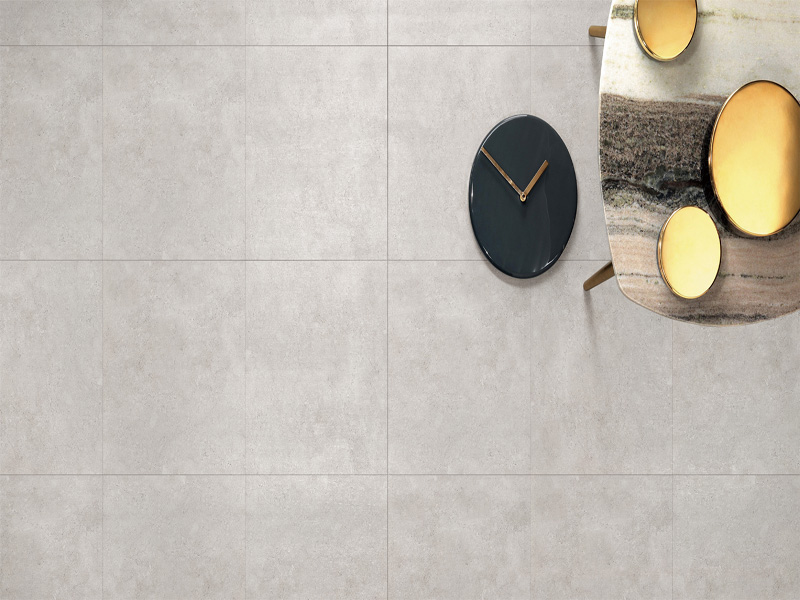
Porcelain tile is a extremely hard ceramic tile. Porcelain tile consists of a ceramic covering classified by Standard ISO 13006 (Bla), signifying a pressed material with absorption equal to or lower than 0.5%. It is obtain from raw materials of a high degree of purity, submitted to heat treatment (1,220°C) and compacting pressures higher than those used in the production of conventional ceramics tiles. High mechanical resistance and high resistance to scratching and chemical attacks characterize it, when compared with natural stones.
- Water absorption
- Mechanical resistance to bending and rupture load
- Resistance to deep abrasion
- Abrasion resistance
- Resistance to scratches
- Resistance to thermal shock
- Resistance to freezing
- Expansion by humidity (EPU)
- Resistance to chemical attack
- Resistance to friction
Natural stone floors are queried materials cut into uniform tiles. You can use them on floors, walls, and backsplashes throughout the home. Marble, granite, limestone, travertine, and slate are a few of the most popular natural stone tile texture options. These materials are synonymous with luxury and opulence and can increase the resale value of a home, especially when featured in kitchens and bathrooms.
Because they are completely natural, colors can vary greatly from one piece to the next and these tiles are definitely on the more expensive side of all available flooring options. You can use natural stone both inside and outside the home. It can easily transition from a living room to a sunroom or even a back patio.

Technically speaking, Porcelain tile is comparable with natural stone and with conventional ceramic covering, technical analyses in comparison to natural stones affirm the superiority of porcelain tile.
The only difference between porcelain tile and regular ceramic tile is that the clay used in porcelain tile is more highly refined and purified. Consequently, porcelain tiles are denser than a standard ceramic tile. Natural stone tile on the other hand is somewhat different than porcelain and ceramic.
To begin, porcelain and ceramic are not different kinds of tile. Porcelain is just one of many varieties of ceramic tile. All ceramic tiles, including porcelain, are made out of clay, some additives (such as feldspar and quartz sand), and water. The only difference between porcelain tile and regular ceramic tile is that the clay used in porcelain tile is more highly refined and purified.
Consequently, porcelain tiles are denser than a standard ceramic tile. Because of their high density, porcelain tiles are less likely to absorb moisture which makes them more durable and resistant to staining. Porcelain tiles are frequently found on harsher applications like flooring and even outdoor areas where freezing may occur.
Ceramic tile comes in either glazed or unglazed surfaces. The glazed surfaces are like glass and are best used on walls as they are too slippery for floor applications. Glazed ceramic tiles are also a little more susceptible to cracking.
Basically our best advice is ignore the term porcelain altogether when shopping for clay-fired tiles. Disregarding the completely useless distinction between porcelain and ceramic tile actually makes choosing tile much easier. Instead of trying to figure out if a tile is or is not porcelain, just look for the size, pattern, price and color that works best for you in a tile rated for the application you intend.
Natural stone tile on the other hand is somewhat different than porcelain and ceramic. Because of its natural variances some people find it difficult to keep a clean and neat appearance.
Though the uniqueness guaranteed by natural stone can be appealing, it can make large rooms seem busy and can be overwhelming to the eye. It is also challenging to clean considering all its textural ambiguities and non-uniform coloring. As a positive note, natural stone is very scratch resistant and holds up much better under stress and normal traffic than ceramic or porcelain tile.
Although it might seem challenging to care for and maybe even design around, natural stone is by far the most beautiful tile on the market. Nothing says elegance quite like natural stone.
Now as you move forward with future kitchen and bathroom remodeling, obtaining this knowledge about tile will help you nonetheless.
Also like:
Polished Tiles vs Glazed Porcelain Tiles
Difference Between Porcelain Tiles and Ceramic Tiles
Copyright © 2021 Guangzhou Weyes Network Technology Co., Ltd. | All Rights Reserved